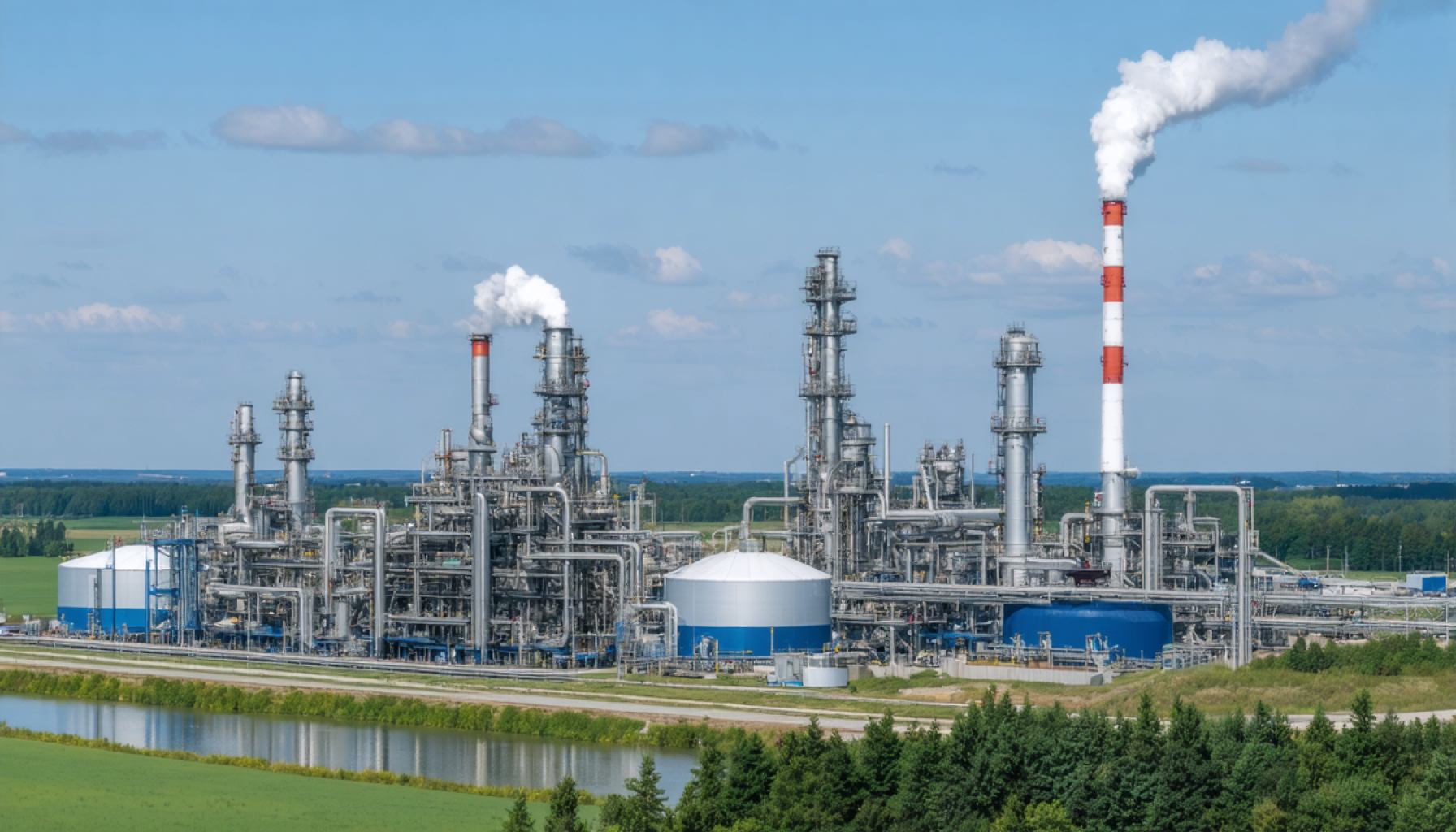- Germany’s Lingen refinery is transforming from a traditional energy hub into a center for low-carbon solutions, pivotal for Europe’s green hydrogen future.
- Supported by strong government policies and industry investments, Germany leads Europe’s transition to hydrogen technology.
- Accelera’s decision to produce electrolysers in Spain highlights Europe’s commitment to building a resilient hydrogen supply chain and expertise.
- For bp, Lingen signifies a strategic move into hydrogen, aligning with their goal to produce significant hydrogen quantities by 2030.
- The Lingen project could inspire further large-scale developments, essential for Germany’s vision of clean energy-powered industries.
- As green hydrogen demand grows, projects like Lingen’s are crucial for providing a sustainable energy supply, driving Europe toward an eco-friendly future.
Once a cornerstone of Germany’s industrial prowess, the storied Lingen refinery now embarks on a bold new chapter. Imagine an industrial giant being reborn, transforming from a powerhouse of traditional energy to a haven for low-carbon solutions, as it drives Europe towards a sustainable future.
Lingen, nestled in the German heartland, stands at the epicenter of Germany’s green revolution, as the country ambitiously leads the European charge into the realm of hydrogen technology. Supported by robust government policies and substantial industry investments, projects like Lingen are not just thriving but are crucial in weaving a comprehensive green hydrogen tapestry across Europe.
Key to this transformation is Accelera’s ingenious choice to manufacture its electrolysers in Spain. This strategic decision is about more than just logistics—it signifies Europe’s dedication to nurturing a resilient hydrogen supply chain, showcasing the continent’s burgeoning expertise and decreasing dependence on external forces.
For bp, Lingen represents a strategic leap into the hydrogen arena, a vivid illustration of how traditional oil giants are morphing into purveyors of low-carbon solutions. This project aligns with bp’s global ambition to produce substantial quantities of hydrogen globally by 2030, demonstrating a sweeping shift in energy dynamics.
Germany envisions a future where clean energy powers its industries, necessitating enormous investment in infrastructure like electrolysis plants and transport networks. Lingen’s success could spark a chain reaction, inspiring additional large-scale projects and cementing hydrogen’s crucial role in Europe’s energy mosaic.
As demand for green hydrogen surges, initiatives like Lingen’s are not merely beneficial; they are essential. These projects promise a dependable, sustainable energy supply, powering Europe toward a vibrant, eco-friendly future.
Why Lingen’s Green Hydrogen Transformation Matters More Than Ever
Insights into Lingen’s Green Hydrogen Progress
The transformation of the Lingen refinery symbolizes a significant shift in Europe’s energy landscape, particularly toward sustainable energy through green hydrogen. Let’s delve deeper into the facets that were not fully covered in the original discussion.
How-To Steps & Life Hacks for Green Hydrogen Implementation
1. Site Assessment and Planning: Evaluate existing infrastructure at refineries like Lingen to determine the adaptability for hydrogen production.
2. Technology Selection: Choose suitable electrolysis technology; PEM (Proton Exchange Membrane) and alkaline electrolysers are common options.
3. Partnerships and Collaborations: Engage with technology partners such as Accelera for electrolyser manufacturing to leverage expertise and reduce costs.
4. Government and Policy Navigation: Engage with local and national authorities to secure permits and subsidies, critical for initial financial viability.
5. Community Engagement: Work on local engagement plans to ensure community support and ease the transition process.
Real-World Use Cases of Green Hydrogen
– Industrial Applications: Green hydrogen can decarbonize high-energy industries like steel production.
– Transportation: It plays a pivotal role in fueling hydrogen-powered vehicles, buses, and trains.
– Energy Storage: Serve as a storage medium for renewable energy, balancing supply and demand fluctuations.
Market Forecasts & Industry Trends
The global green hydrogen market is expected to grow substantially, with estimates suggesting a CAGR of over 50% by the mid-2030s. The push for carbon neutrality by European nations accelerates this growth. The Hydrogen Council reports that by 2050, hydrogen could meet 18% of the world’s energy demands.
Reviews & Comparisons
Comparing Lingen’s approach with other European facilities reveals its unique position in leveraging existing refinery infrastructures rather than building new setups, which significantly reduces upfront costs.
Controversies & Limitations
– Economic Viability: Despite its potential, green hydrogen’s cost remains high compared to other fuels. Continued investment and technological innovation are needed to lower production costs.
– Water Usage: Electrolysis requires significant water, raising sustainability questions in regions with water scarcity.
Features, Specs & Pricing
– Production Capacity: Lingen aims to produce thousands of tons of hydrogen annually.
– Electrolyser Specs: Manufactured by Accelera, featuring advanced technology to enhance efficiency.
– Cost Metrics: Initial estimates indicate costs of $4-$6/kg, with aims to reduce it to $2-$3/kg by 2030 with technological advancements and scale.
Security & Sustainability
– Infrastructure Protection: Securing production sites against cyber threats is crucial and typically involves partnership with cybersecurity firms.
– Environmental Impact: Ensures that projects do not adversely affect local ecosystems and water supplies.
Pros & Cons Overview
Pros:
– Decarbonizes hard-to-electrify sectors.
– Can stabilize energy networks with renewable fluctuations.
– Supports energy independence by using local resources.
Cons:
– High initial capital investment required.
– Large-scale water use could pose environmental concerns.
– Current high production costs versus fossil fuels.
Actionable Recommendations
1. Invest in R&D: Prioritize research in reducing electrolyser costs and improving efficiency.
2. Policy Advocacy: Encourage governmental policies that provide subsidies and tax incentives for hydrogen projects.
3. Public Awareness: Increase educational outreach to inform the public about hydrogen’s role in the clean energy transition.
By comprehensively understanding the multi-faceted approach to Lingen’s transformation, stakeholders can better position themselves to harness the full potential of hydrogen technology in paving a sustainable path forward.
For further information on green hydrogen and its applications, you can visit the official European Energy website at BP.














